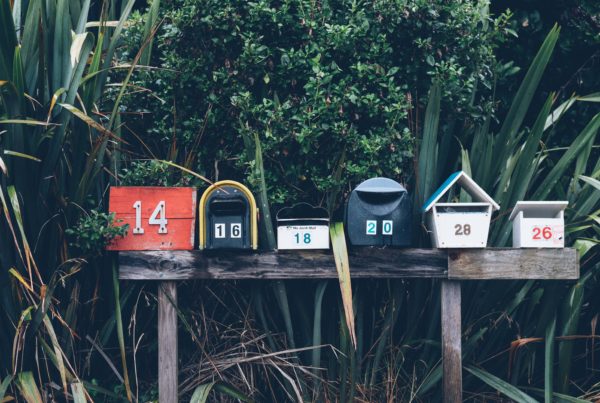The United States Postal Service becomes a hot news item about twice a year. The first is every January when the price of the retail postage stamp rises and, like any price increase, is not met with a lot of enthusiasm. The second is the unveiling of a cool stamp, such as John Lennon, Marvin Gaye, or Charlie Brown, which is considerably more fun.
But in the last several months, the US Postal Service has received more attention than any time in the last 50 years. The 24/7 news cycle has caused organizations concern about direct mail marketing–specifically questioning the ability of the USPS to deliver their direct mail campaigns on time. Political spin aside, addressing mailer’s expectations from the Postal Service as they drop holiday direct mail campaigns is the central issue.
Realignment
Contrary to what cable news would like you to believe, there is no evidence of a grand conspiratorial gesture by any political party to alter mail collection, sorting, and delivery. A photograph that went viral shows a veritable mountain of blue mailboxes removed from the streets. The image is captioned with copy indicating mailbox removal is impeding citizen’s access to the mail. In fact, the photo is from Hartford Finishing in Hartford, Wisconsin, a company contracted by the USPS to refurbish and powder coat weather-worn mailboxes. They were simply queued for normal, scheduled, cleaning and painting.
The USPS replaced many of the collected mailboxes with new or reconditioned units. Not that the Postal Service never removes mailboxes. The USPS routinely decreases the number of mailboxes in geographic areas where mail is seldom deposited in them. Sending carriers to perpetually empty mailboxes every day is wasteful, and the USPS takes steps towards efficiency when it can. This isn’t a recent phenomenon.
Reports of removing letter sorting equipment from processing centers also got lots of press attention lately. The USPS is taking these actions because of the drop in mail volume. The decade-long trend of declining mail volumes and shifting demographics forces the USPS to make processing adjustments. Machines get decommissioned every year. The Postal Service has been streamlining their equipment lineup since the 2000s.
That there is less mail to sort shouldn’t be a shock to anyone. The post office had planned to shut down 700 sorting machines nationwide, about 10% of its capacity. Letter sorting machines are about the size of a small subway train and more mechanically complex. Maintenance, parts, and real estate are not free, so taking mail sorting machines out of service when there is no mail to sort makes sense. It’s important to note that the Postal Service’s small parcel business is brisk. The decommissioned machines only sort letters, not parcels.
Having Said That
While many of the effects of postal processing adjustments are more imagined than real, the new Postmaster General has instituted cost-cutting measures. Actions that lower expenses are appropriate for an agency that has struggled with finances for some time. He directed a hiring freeze, eliminated most authorizations for overtime, and made some scheduling decisions that can create some delivery delays. Over 70% of the Postal Service’s costs are labor, so focus on the workforce is understandable. The immediate downside from the Postmaster’s policies is some longer delivery times and reduced service, but many factors influence the impact on mail customers, not just these recent changes.
Instances of delays and their effect on residents have peppered newscasts and blog posts. The most common examples are people not receiving prescription medications or checks on time. Remember, the Post Office receives no tax dollars and operates on revenues from postage and other services. For 2020, they have to deal with a deficit measured in the billions.
The USPS has an enormous infrastructure. Simply adhering to the CDC guidelines of masks, social distancing, and constant hand-washing slows processing. Employees with symptoms were out sick. Was service at your local grocery store or coffee shop the same during the height of the pandemic as it was in January 2020? Multiply the unforeseen health effects by 497,000 employees processing mail for 160 million addresses every day, and you can see how the USPS wouldn’t be spared from the pandemic’s effect.
Marketing Mail Planning
Like most businesses, the Postal Service will return to normalcy in time. When that will happen is unknown. At the moment, marketing mailers should operate under the assumption that mail delivery will exceed the normal delivery times by a bit. A post on the USPS FAQ page on June 1, 2020 noted that while the delivery window for Marketing Mail is 3 -10 days (not guaranteed), the Postal Service does not consider Marketing Mail to be late until delivery exceeds 14 days.
In practice, the time to deliver direct mail doesn’t really matter much to mailers, as long as the timing is consistent. If it takes a few more days for delivery, a mailer just backs up their schedule and enters the mail earlier than they have in past campaigns. For time-sensitive materials, strategies like drop-shipping the mail closer to delivery points can take some of the guesswork out of the process.
The best thing a marketing mailer can do is keep everyone in the loop. With Intelligent Mail Services, mailers can track individual pieces throughout its journey via Intelligent Mail barcodes. Everyone involved in a direct mail project understands we are living in very different times. Reporting mail’s progress is re-assuring. Our postal experts can show you how mail tracking can reduce any unease you may feel about launching a new direct mail campaign.
It’s fair to say the perception of a postal slowdown is exaggerated because it makes good press. Mail is running just fine in most parts of the country.
Still the Best Option
Direct mail effectiveness towers over electronic communications, even if it takes a little longer to deliver. With a dramatic drop in the volume of marketing mail, any organization running a campaign today will enjoy less competition in the mailbox. Consumers notice offers when their mailboxes hold just a few pieces of mail each day. With a little planning, direct mail can remain impactful, even in a time of uncertainty.







